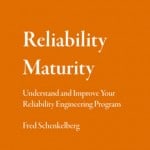
Reliability is not the sole responsibility of the reliability engineer but results from nearly everyone in an organization making decisions that move toward the desired product reliability performance.
As a reliability professional, I often find it necessary to explore ways to leverage my knowledge of these areas to change the culture within an organization to create a sustainable program that achieves reliable products time and again.
Proactive organizations are those that work to prevent problems associated with reliability before the product reaches the production stage, let alone the marketplace. Reactive organizations wait until fails occur, then deal with the consequences.
If you are in an organization that tends to react rather than prevent, consider how you should set about changing the culture. Effecting change by itself can often be difficult, but I offer a few ideas that can be useful as you confront this challenge.
1. Reflect the current situation back to the organization.
An assessment that examines the current way the organization includes reliability in its discussions and decisions creates a picture of the process, tools, and attitudes that form the current culture concerning reliability.
Is the organization simply saying ‘reliability is important’ and then focusing on other priorities? This often occurs when reliability is difficult to measure whereas cost is directly measured. How are tools such as FMEA and ALT being used in the organization?
Are they used to just satisfy a checklist or to prioritize work and understand specific failure mechanisms? In either case, the degree to which the organization selects and uses tools to make decisions reflects its overall culture.
By creating a short report that includes what the organization does well, areas for improvement, and specific recommendations, you can make the current program visible and available for examination.
2. Create a vision of what could be.
With respect to changing a culture, what would success look like? How would you know that the culture has actually changed?
You need to be specific and include concrete examples of what customers are saying, market share graphs, comments from co-workers, etc. By painting a strong sensory image of what it will feel like when the culture has changed, you make the need for change compelling.
3. Map the steps needed to attain the goal.
A compelling vision is the goal, but it is insufficient to motivate change across your organization.
A roadmap or plan detailing both obstacles and milestones can help. The idea is to show how to get started. Explain the first step and how that will lead to the steps necessary to achieve the objective.
For changes to an overall reliability program the steps may include improved data analysis, changes in ways data are requested from vendors, creation of a reliability/availability model, and starting to use HALT or FMEA.
4. Set expectations.
Within a larger organization expectations should be set for key individuals (e.g., change agents, respected individuals, and community links). This creates a very clear connection between their role in the organization and the proposed changes.
A handful of influential individuals working together to achieve change can very likely achieve success in effecting change.
5. Provide support and encouragement.
Change is hard work. It involves personal risk, learning new processes or techniques, and moving away from the known to the unknown. Change does not occur with a single meeting or announcement but is an ongoing process.
Some best practices include continuously encouraging attempts to move along the proposed path; answering questions, providing training, and shoring up confidence, checking in regularly with key change agents; rewarding successes, and highlighting value obtained along the way.
The improvement resulting from a change in a reliability program today does not immediately reduce warranty, for example. Often, a significant delay ensues before the benefits are realized. Providing tools and processes to estimate future value is essential.
Changing reliability culture may take the coordination of one person and the support of a small team. The change of the conversation to include data, value, and customer reliability expectations may be sufficient to significantly prevent reliability problems. Effecting change will not be easy and will take some time to accomplish. Often, several cycles of product development are needed to create permanent change.
With a clear assessment of the current situation, a vivid vision for the future, a basic guide to get everyone started, and the regular addition of your energy to continue making progress, change is possible.
Further reading:
This article is a reworked and updated version of the To change the Reliability Culture posted a few years ago.
Further listening:
There are a few podcasts on this topic too. Transition of Reliability Culture and Team Culture and Reliability are two examples.
Also a book:
 See the ebook (free to members) Reliability Maturity for detailed assessment and steps to take to improve the organization’s approach to achieving product reliability.
See the ebook (free to members) Reliability Maturity for detailed assessment and steps to take to improve the organization’s approach to achieving product reliability.
Leave a Reply